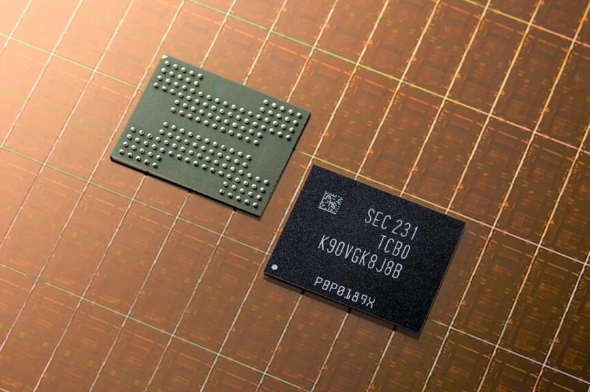Connection to DriversCloud Create a DriversCloud.com account Reset your DriversCloud.com password Account migration
Samsung is also preparing its 300-layer NAND, but as early as 2024
Could SK Hynix be overtaken by the country's other flash memory giant, NAND?
A few days ago, we reported on SK Hynix's announcement at the Flash Memory Summit 2023 in Santa Clara, California. South Korea's SK Hynix used the event to backtrack on its March announcement that it had produced its first 321-layer NAND chips. In California, however, it was no longer a question of simply presenting its new technology, SK Hynix actually demonstrated its know-how and a real 321-layer NAND chip, confirming that this should lead to " a 59% improvement in productivity ".
SK Hynix is not alone in the market for NAND - flash memory used in smartphones and SSDs, for example. Companies such as Kioxia, Micron and Western Digital also have their say, but it was finally a compatriot who was the first to react to SK Hynix's announcement. Indeed, Samsung wasted no time in unveiling its own plans in this area. In fact, it wasn't Samsung that took the floor, but the Seoul Economic Daily newspaper which, quoted by TechPowerUp, echoes the ambitions of the South Korean giant.
For the time being, Samsung is marketing 236-layer NAND, a little less than SK Hynix (238 layers). For the next generation, Samsung should once again do less well than its compatriot, since the Seoul Economic Daily mentions 300-layer NAND, compared with SK Hynix's 321 layers. This gap could obviously be a handicap for Samsung, but it does have one major advantage: it is said to be in the starting blocks for mass production of its chips. This is likely to happen as early as next year, perhaps even in the first half of the year. If Samsung were to succeed in beating SK Hynix to the punch, the company would obviously score points. To be continued, as we say in such cases.






